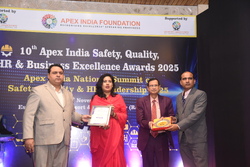Nuclear Energy is Back in Favour
The International Atomic Energy Agency (IAEA) projects that global nuclear capacity could grow 2.5 times by 2050

Nuclear energy is staging a strong comeback, with 30 countries committing to triple global nuclear power capacity by 2050. These include the United States, France, Japan, Republic of Korea, United Kingdom, UAE, and several European, Asian, and African nations, reflecting a broad coalition of support.
The resurgence is driven by two key factors:
- Technological innovations such as small modular reactors (SMRs) and microreactors.
- Energy security concerns, as nations seek low-emission and reliable power sources.
Asia Leads the Race
Asian countries—particularly China, Korea, and Russia—are outpacing Western counterparts in building and exporting nuclear reactors. According to the International Energy Agency (IEA, 2025):
- Of the 420 nuclear reactors operating worldwide, 63 are under construction, nearly half in China.
- Over 60 reactors have had their lifespans extended in the last five years.
- Asian countries typically bring new plants online faster than the West.
One flagship example is the Barakah Nuclear Power Plant in the UAE, built by Korea Electric Power Corporation (KEPCO). Barakah now provides 25% of the UAE’s electricity, all carbon-free, making it the nation’s single largest power source.
Nuclear as a Clean Baseload Power
Unlike intermittent renewables, nuclear power provides stable “baseload” energy, ensuring grid reliability when solar and wind output falls. This has become vital in the era of electrification, where demand from AI, data centers, and electric vehicles is soaring.
Innovations Driving Growth
- Cutting-edge technologies are reshaping the industry:
- Small Modular Reactors (SMRs): Cheaper, quicker to build, and scalable.
- Microreactors: Ultra-small, portable units for remote or military use.
- Advanced Fission Reactors: Safer, more efficient systems using alternative coolants and fuels.
- Fusion Energy: Still experimental, but research is accelerating, with pilot plants expected in the 2030s.
A Global Shift
The International Atomic Energy Agency (IAEA) projects that global nuclear capacity could grow 2.5 times by 2050. Meanwhile, big tech companies—Microsoft, Amazon, and Google—are investing in nuclear projects, underscoring its role in powering the digital economy.
Even in the United States, where funding for clean energy has faced cuts, nuclear power remains a cornerstone of long-term strategy as the country seeks to reassert leadership in this field.
The writer of this article is Dr. Seema Javed, an environmentalist & a communications professional in the field of climate and energy




